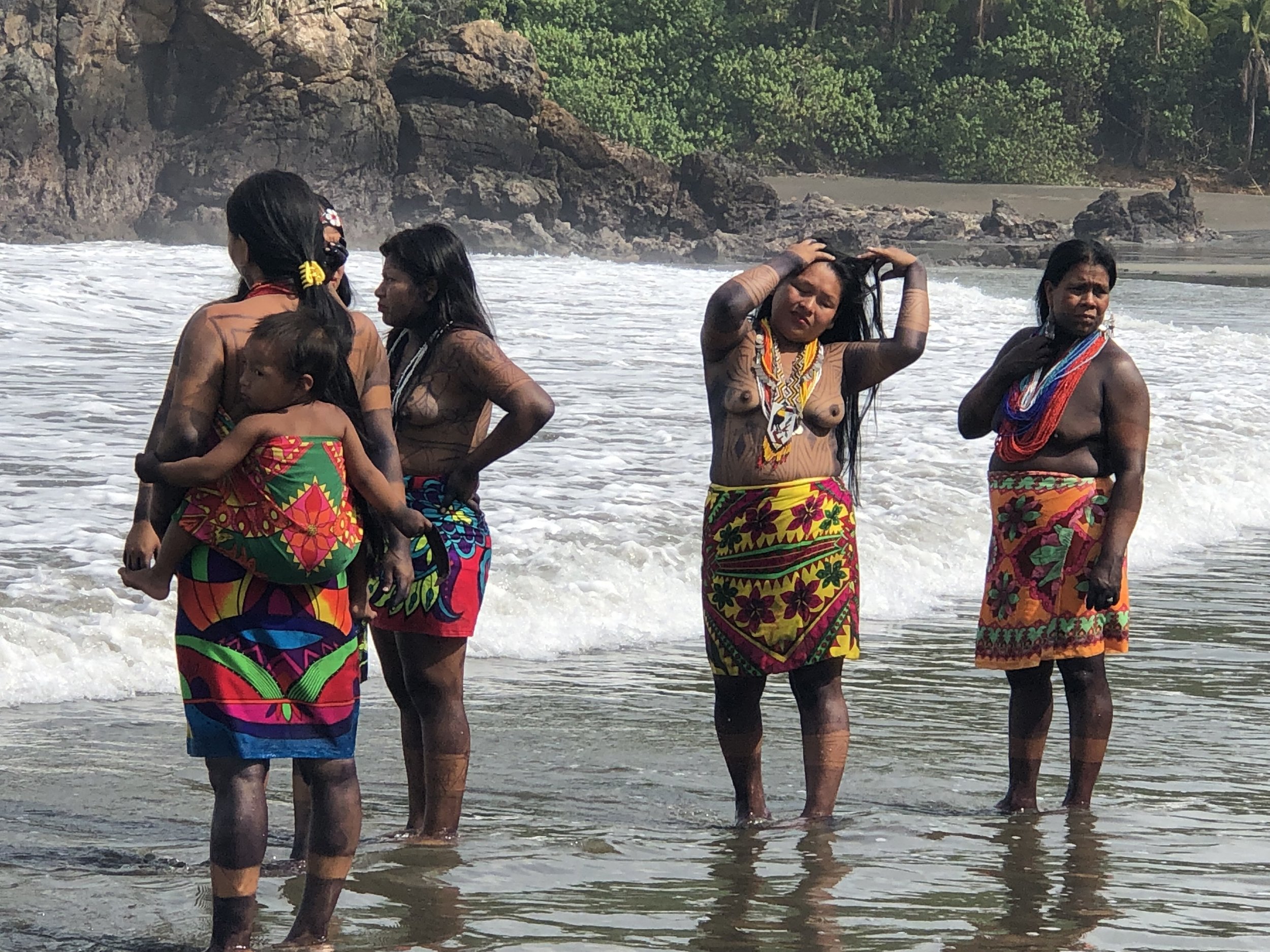An Oasis: People of Another Land
With the peoples of the Amazon still on my mind during this time of deforestation and fires, I felt inspired to post a few photographs from a different indigenous group. While traveling by small ship last spring along the from Costa Rican coast to Panama, then through the Canal and onto Cartagena, Colombia I felt honored to meet them and be given the privilege to photograph them.
While not located in the Amazon, their more protected corner of the world — at least to my eyes, shares certain similarities. Called the Embera aka the Choco, they live in the Darien Gap, a remote part of Panama that forms an isthmus with Colombia. Thanks to this, they have had a better chance at retaining much of their language and cultural practices, including bare breasted women and men wearing G strings.
I had never heard of the hard-to-access Darien Gap. No roads lead there. Not even the Pan American Highway engineers could bridge this “gap” for a 19,000 mile roadway that traverses two continents. This impenetrable mountainous terrain, all with wetlands and rainforest, was considered too challenging. In addition, environmental consequences were evaluated in the 1970’s by a United Nations agency. Amazingly enough, the native people such as the Embera’s concerns about the potential erosion of their cultures as well as diseases, such as hoof and mouth disease, that could spread north from South America were also taken into account.
When my husband and I signed up for this trip with the National Trust and Stanford University, little did we expect to meet such a gentle, beautiful, and to my anthropomorphic eyes, innocent people living in what seems like a oasis. “Before the Fall” came to my mind.
Upon a rather messy, somewhat turbulent landing on the beach in Zodiacs, our small group began to walk on the slate gray sand before hiking up to a small village in the rainforest.
To reach the tiny village, where we would discover sophisticated, handmade baskets, I simply began to follow the man along the beach with the drum. Like everybody, including the children, most of his body was covered in a black natural dye and tattoos. The topless women wore bright skirts and necklaces.
We then took a short hike to a small market with goods mainly laid out on the ground. Here, under a straw palapa, we were privy to traditional music and dance by both children and adults.
Photos below: one of our own “tribe” receiving a tattoo; a basket I bought with a turtle image and a girl playing with her friends in a tree.
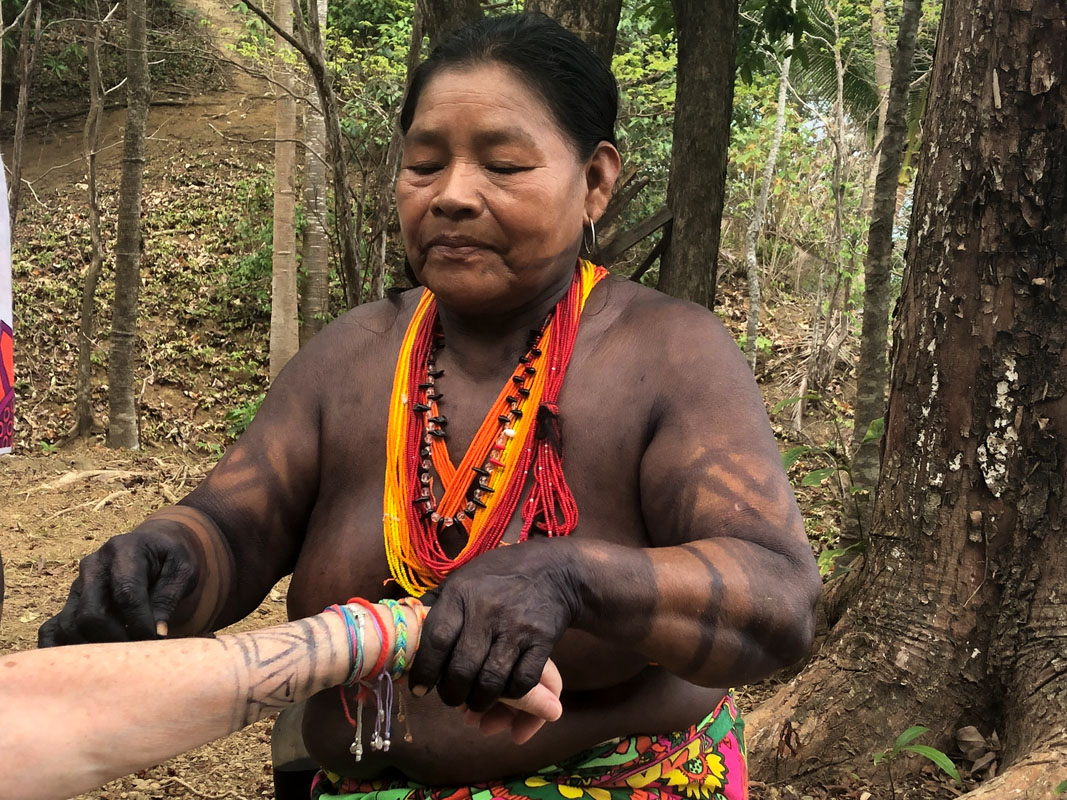
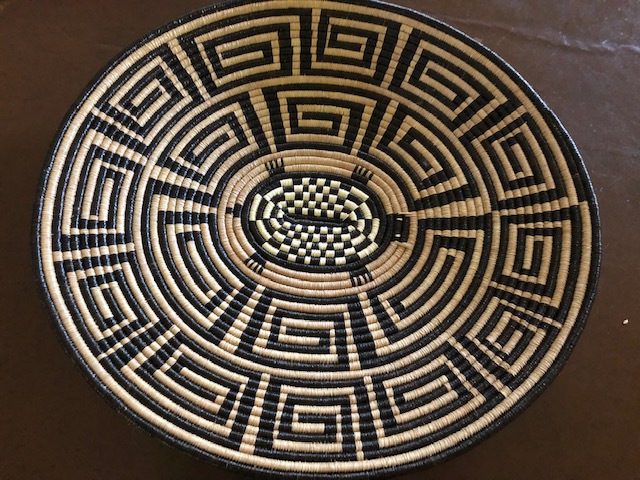
Below: photos of children. How will they fare in the future? I often wonder.
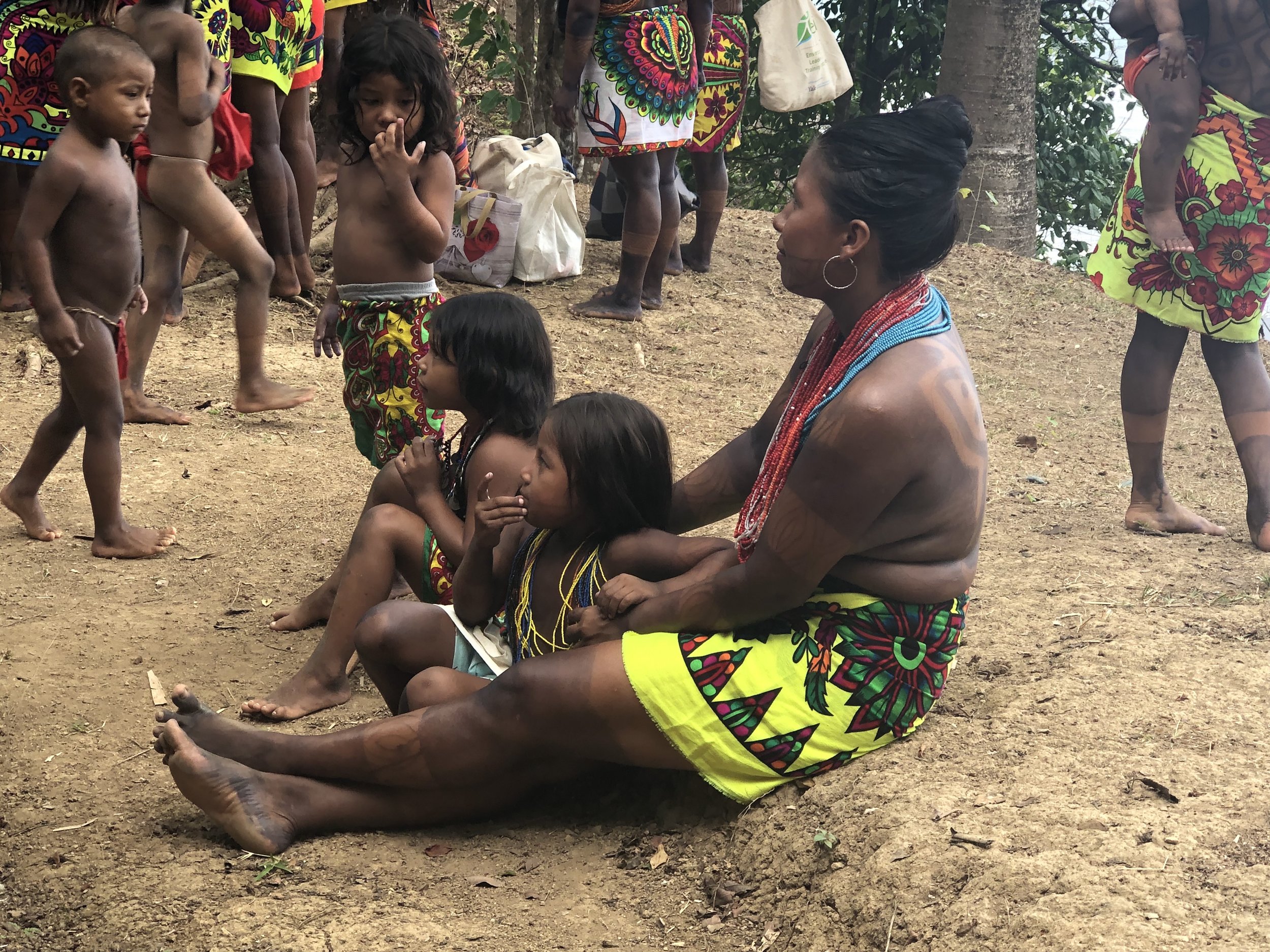
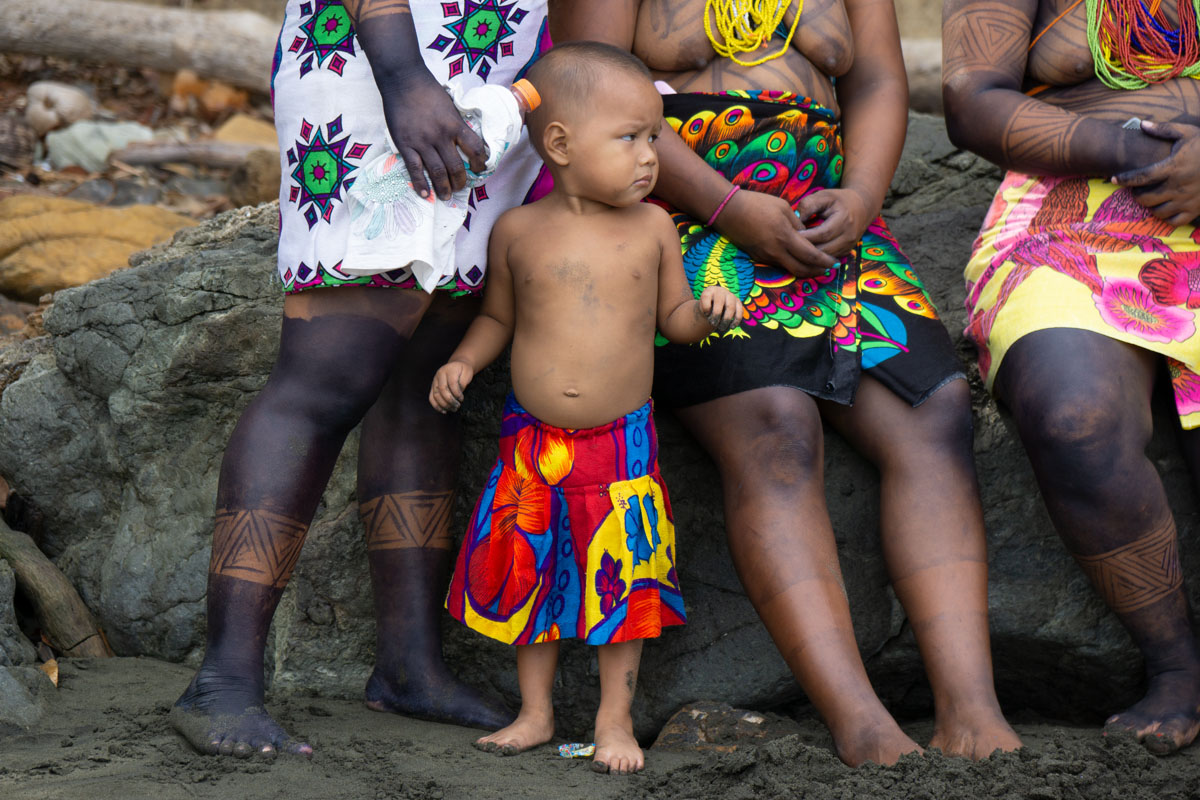
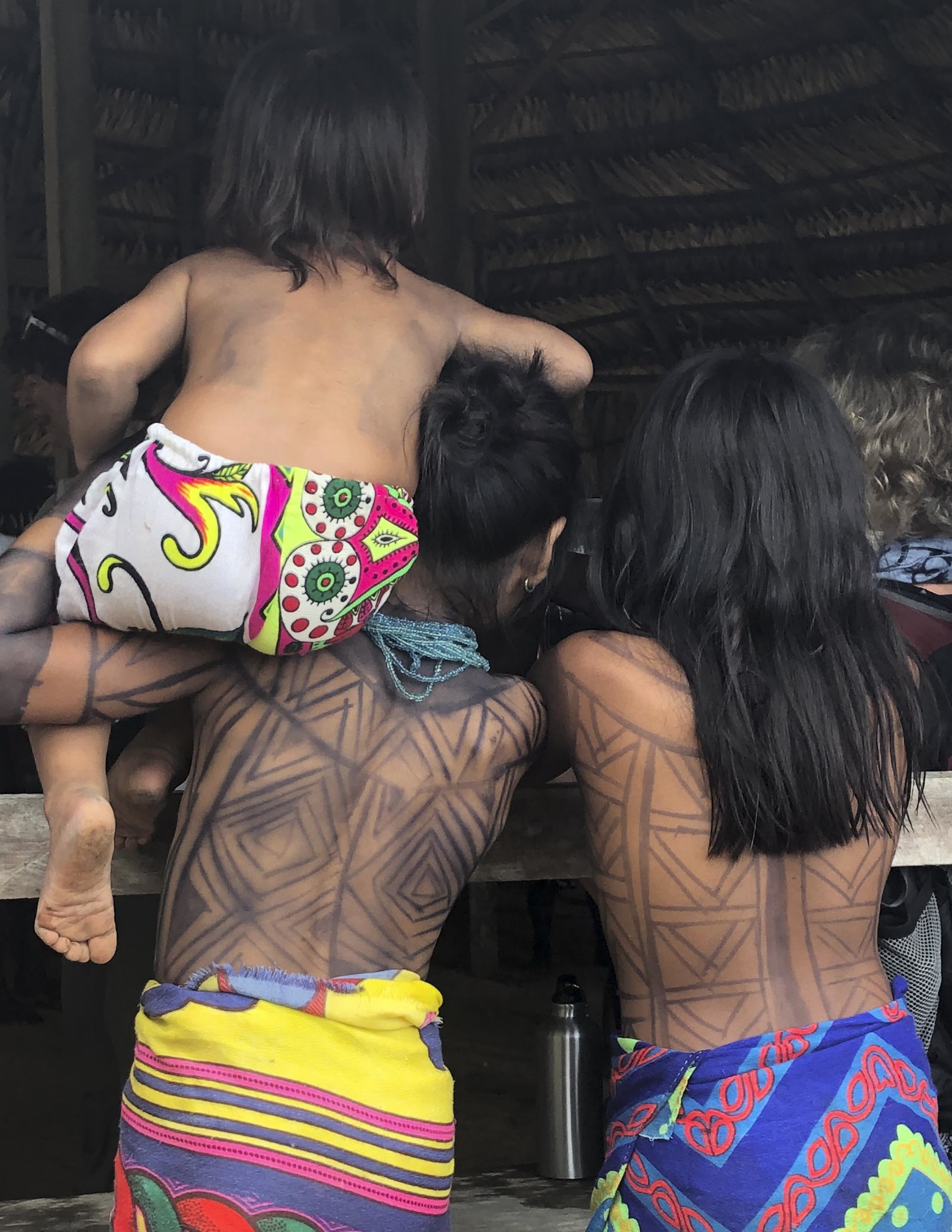
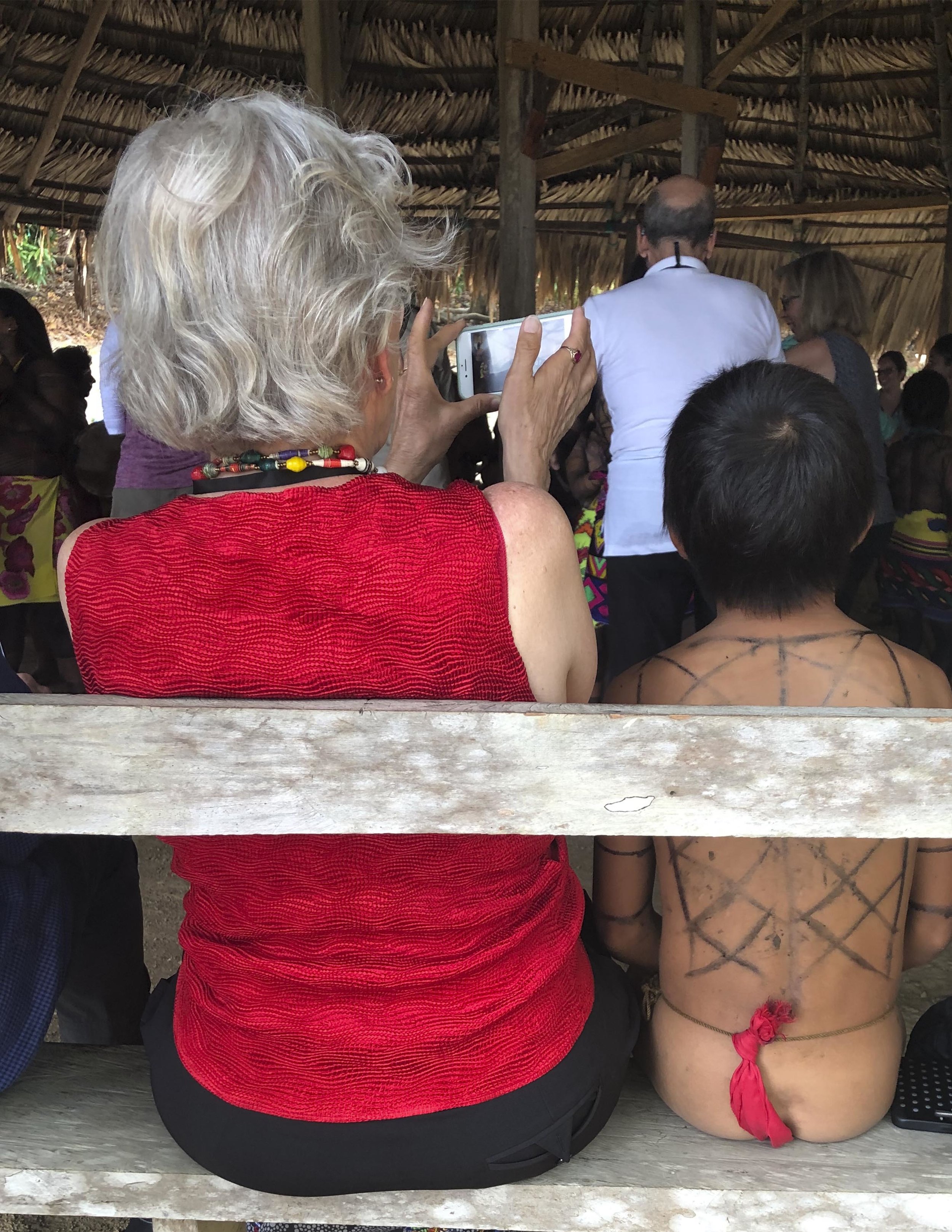
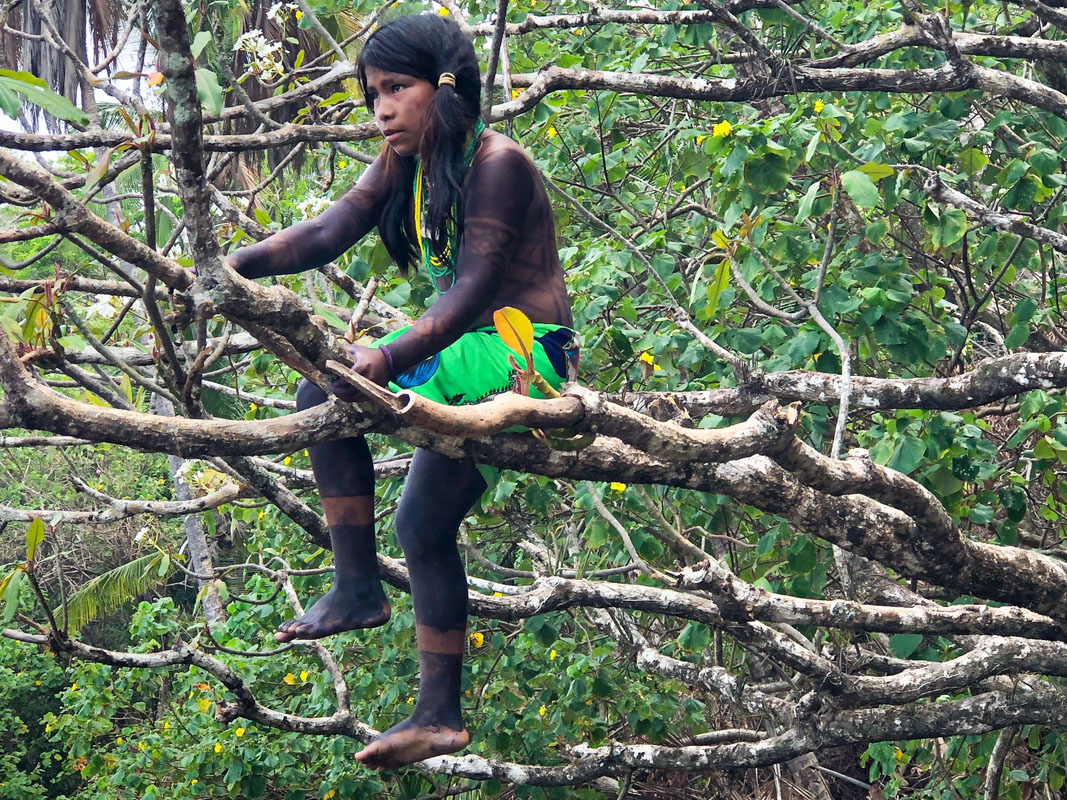
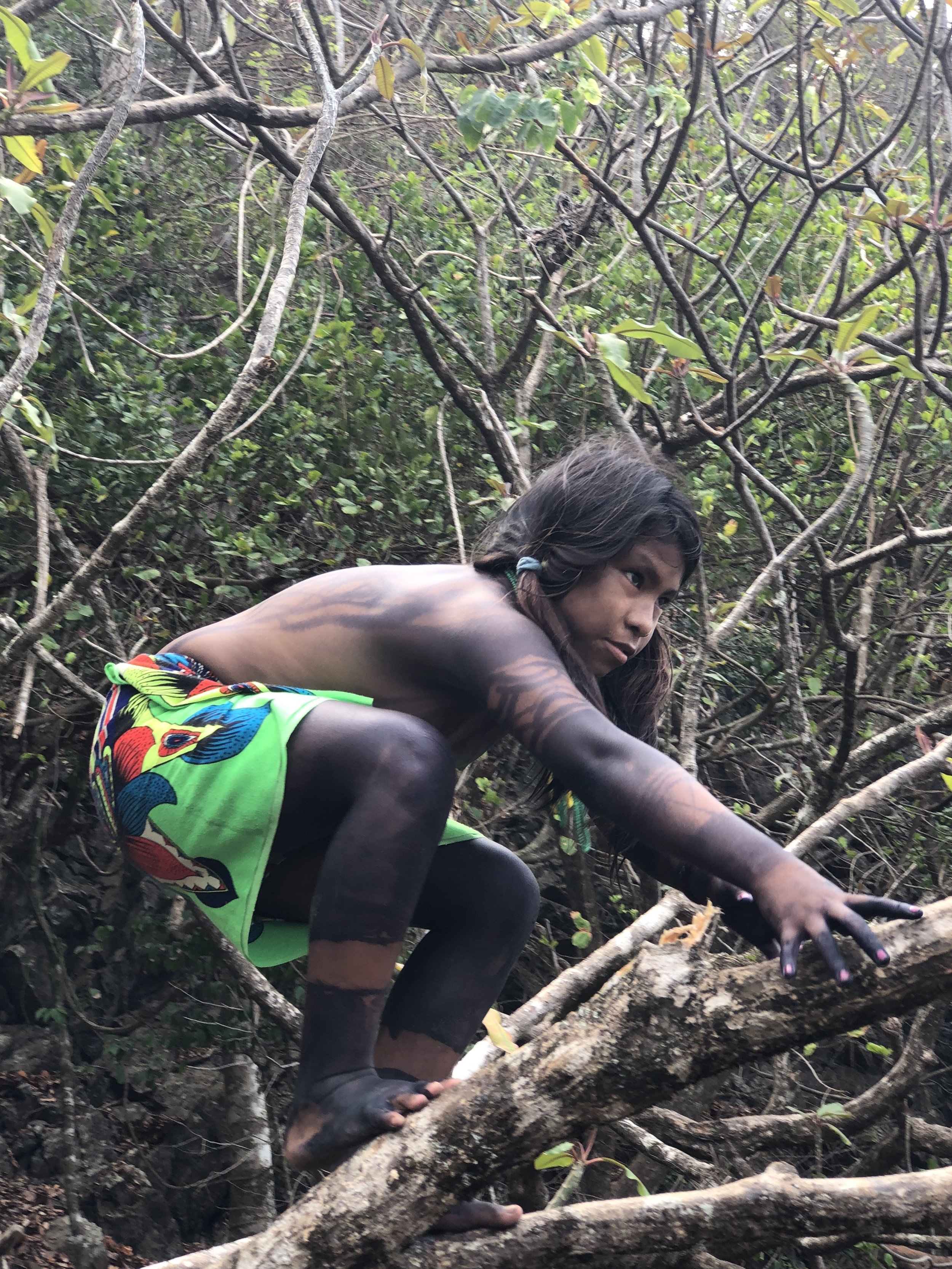
With women and a young child
Wearing a mask i bought from this lady



